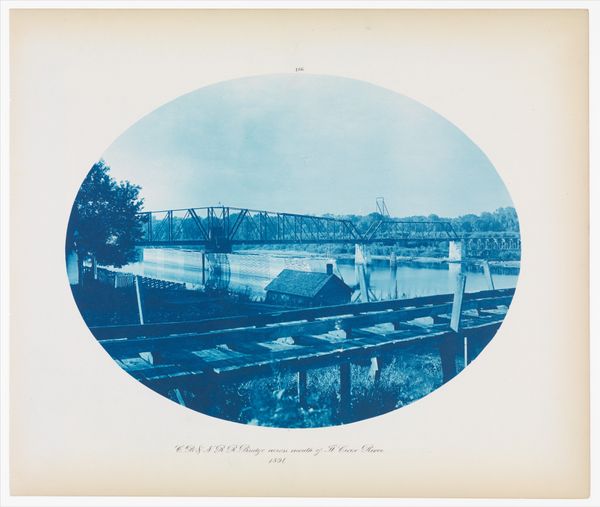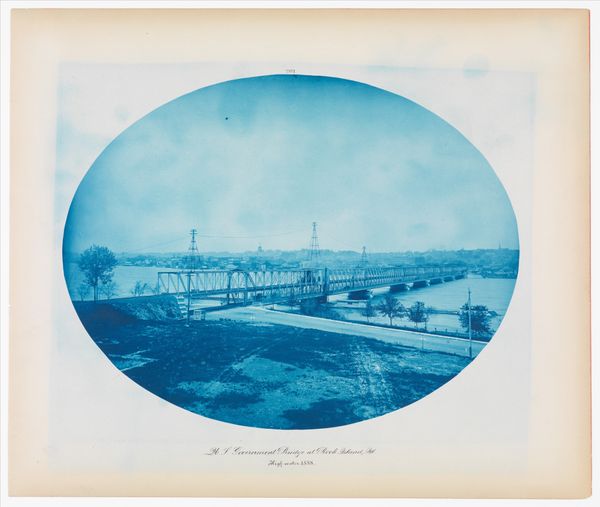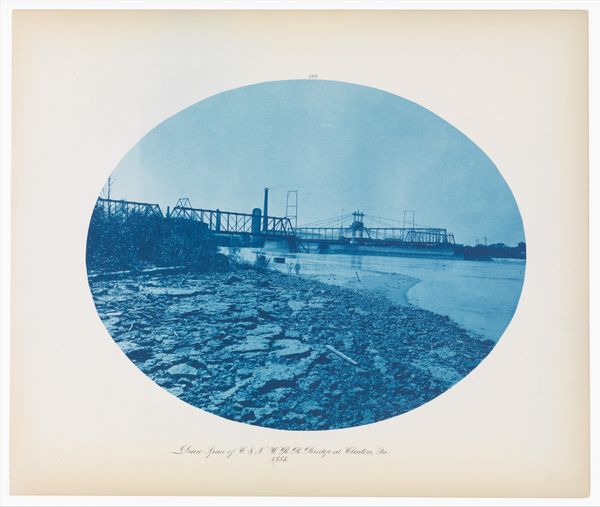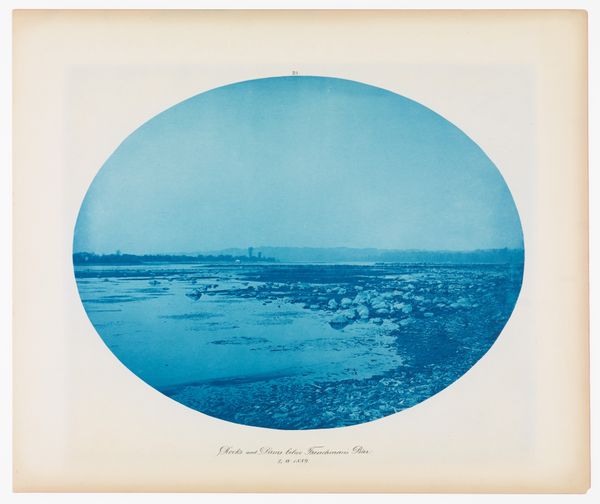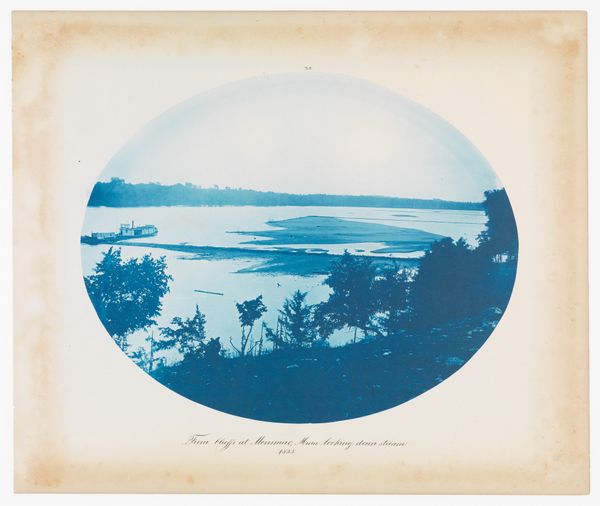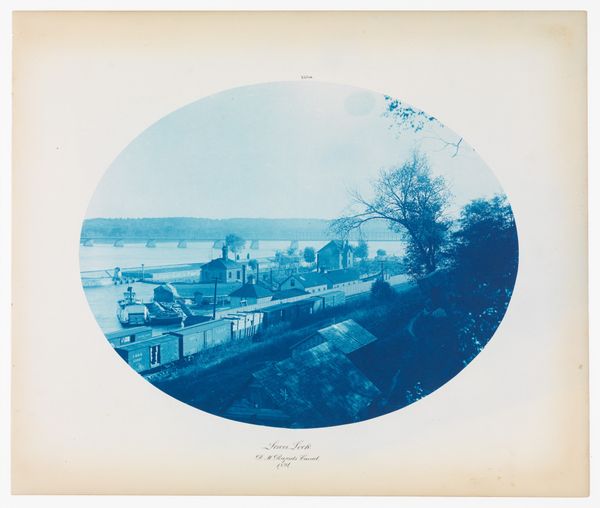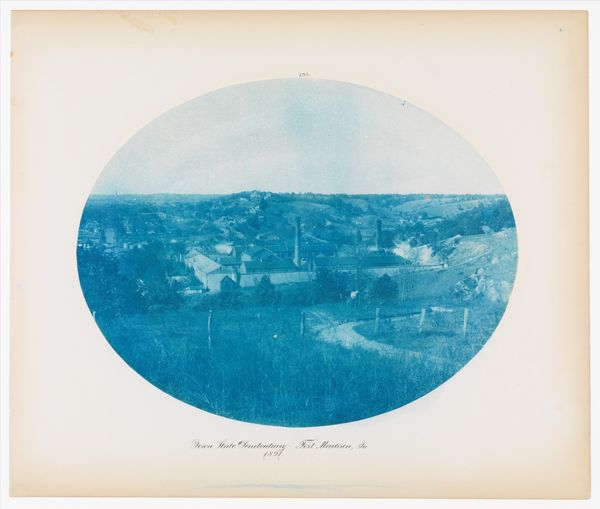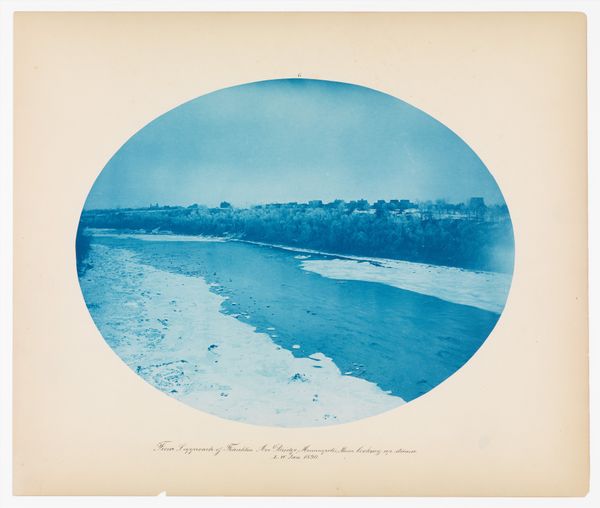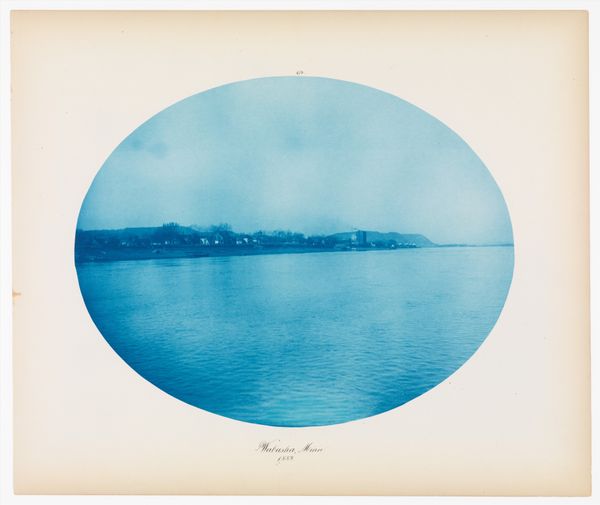
No. 185. Chicago, Milwaukee & St. Paul Rail Road Bridge at Hasting, Minnesota 1885
0:00
0:00
print, cyanotype, photography
#
16_19th-century
# print
#
landscape
#
river
#
cyanotype
#
photography
#
cityscape
Dimensions: Sheet: 14 1/2 × 17 3/16 in. (36.8 × 43.7 cm)
Copyright: Public Domain
Curator: Oh, this cyanotype just exudes calm, doesn't it? Almost like looking through a porthole onto a hazy dream. Editor: Indeed, there’s something undeniably tranquil about it. What we're observing here is "No. 185. Chicago, Milwaukee & St. Paul Rail Road Bridge at Hasting, Minnesota," a print by Henry P. Bosse dating back to 1885. He’s carefully rendered an image of a railway bridge; it's currently housed here at The Met. Curator: The composition, though! That single figure sitting on the beach...they look like they’re contemplating something enormous. Makes you think about the sheer ambition of building a railway, that bridge—and, you know, what's at stake for someone looking at it. Editor: Right. And that contrast, that industrial achievement juxtaposed with a single person on the riverbank, raises questions. Cyanotypes, aside from their accessibility, became useful for reproducing engineering drawings, hence their prominence in industries, documenting architectural feats and infrastructure expansion in the late 19th century. Curator: A blue monumentality... It's funny how a process typically associated with technical drawing gives this photograph a lovely melancholy quality, too. Makes one contemplate about how our relationship with materials shifts depending on the intent and time of the artwork. Editor: Absolutely. Bosse clearly understood the value of photography within industrial practices, and at the same time elevated it—even manipulated it through the perspective and the cyanotype process—into something else. His aesthetic decisions say something potent about how these railways changed landscapes, economies, lives. The intense blue here reminds us, even, that every technological development holds layers beyond its intended applications. Curator: Looking at it now I feel strangely optimistic about where art will be going forward, in its ability to morph and transform in the eye of the beholder. Editor: A fascinating bridge from the past connecting us to those conversations now. Food for thought, definitely!
Comments
No comments
Be the first to comment and join the conversation on the ultimate creative platform.
